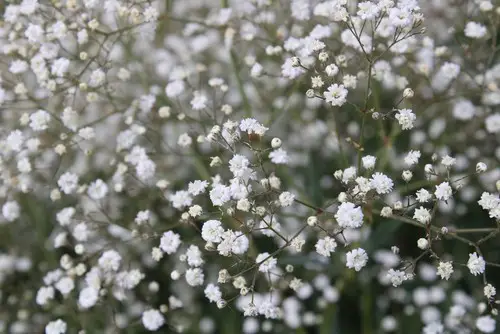Baby’s breath is an ornamental plant, with an outstanding appearance, that has over 100 species. But did you know that there are flowers that look like Babys breath?
In a situation where you can’t find the Gypsophila paniculata, also known as Baby’s breath in your environment, consider its look-alike.
One of the features that make Baby’s breath popular is its small, white flowers that are used for floral arrangements. However, Baby’s breath is an invasive species in certain areas, including North America.
Fortunately, you can choose other flowers that look similar to it if you’re from these regions.
If you’re looking for an alternative to Baby’s Breath, you’re in luck! There are several other flowers available that have a similar appearance.
In this article, we will list and explain 10 flowers that share a striking resemblance with Baby’s breath. Let’s check them out one after the other!
10 Flowers that Look Like Babys Breath
More look a like plants:
1. White Lace Flower
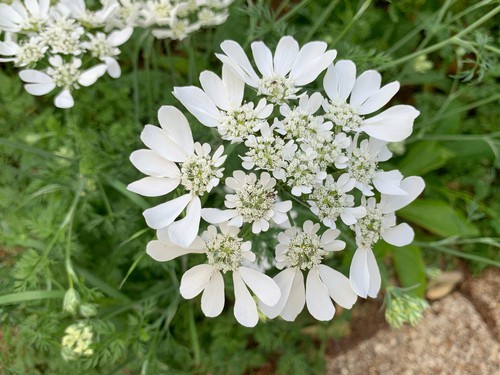
Many gardeners with small gardens love the White lace flower due to its growth pattern. Even though the plant grows in a bushy and closely-packed manner, it always remains tidy.
White lace flower is an easy-to-maintain, gorgeous plant that produces several white flowers. Usually, there are about 8 to 10 flowers on each plant that grows as a bunch. And these blossoms create an unusual design that resembles lace, which is how the plant got its name.
While the White lace flower prefers bright sunlight, it can thrive with partial sun. They also require quality, well-drained soil to produce lots of flowers.
As with Baby’s breath, White lace flowers are also used for floral arrangements.
2. Snow-In-Summer (Cerastium tomentosum)
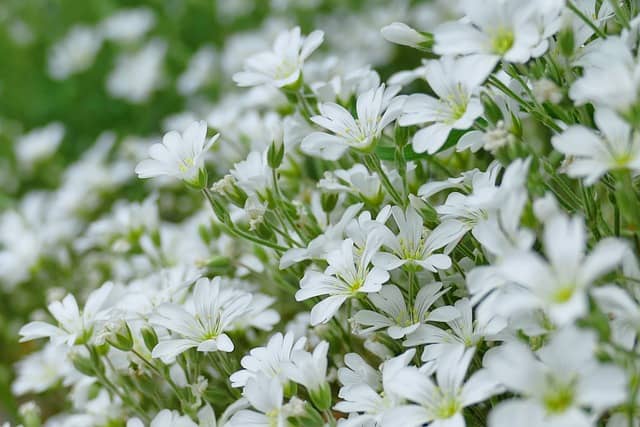
Snow in summer is a desirable plant among gardeners. It is native to Italy and is perfect as a ground cover, especially in arid environments. In early summer, the plant produces several white flowers that look like snow.
Perhaps the perennial plant’s name originates as a result of its blooming nature. Snow in summer plants also features woolly, silver leaves that are equally attractive as their white flowers.
When the conditions are favorable, this Baby’s breath look-alike plant spreads fast. So you need to trim the flower stems, preferably with a lawnmower, to prevent the plant from spreading uncontrollably. And always remember to clear the area to avoid reseeding.
Snow in summer prefers slightly acidic, well-draining soil. It also thrives with moderate watering and bright sunlight.
3. Valerian
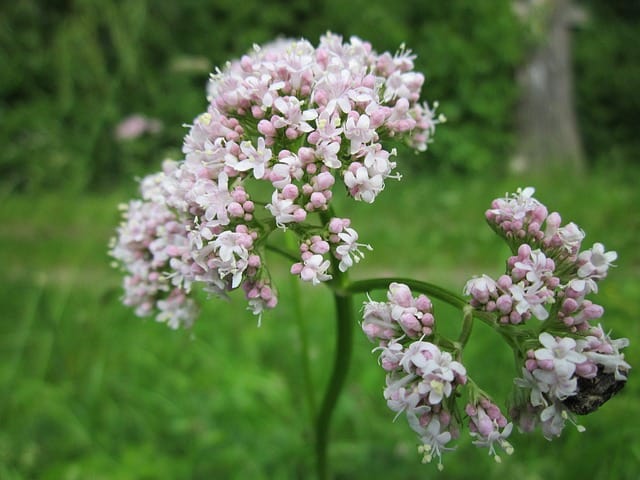
Another flower that looks like Baby’s breath is Valerian. Popular for its scented white or pink flowers in summer, Valerian is often used for medicinal purposes in some parts of the world.
There’s a common belief that the flowering plant can treat digestive disorders, migraines, insomnia, and anxiety. In addition to this, Valerian can also be used for decorative purposes in home gardens.
However, this plant is an invasive species in certain places, including New Brunswick, Canada, and the US state of Connecticut.
Similar to Baby’s breathValerian prefers well-draining, sandy soil with bright sunlight.
4. English Lavender (Lavandula angustifolia)
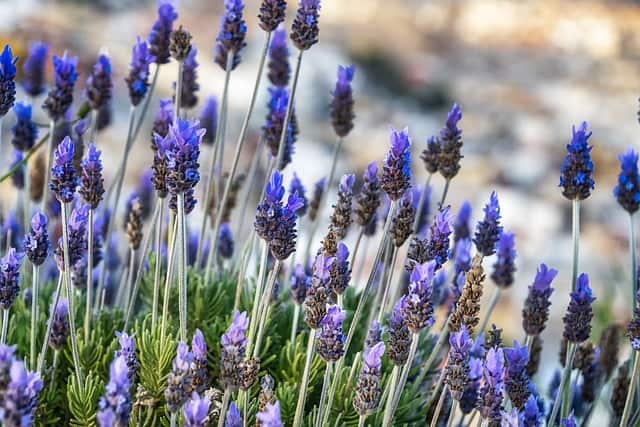
Commonly known for its sweet-smelling purple flowers, English lavender is an attractive plant for household gardens. It is a flowering plant that originates from the Mediterranean district, including France, Spain, Croatia, and Italy.
Not only is English Lavender used for ornamental purposes, but it is also useful for treating certain illnesses. Often, people grow this plant to make medicinal oils after drying its flowers and leaves.
However, English Lavender can be mildly toxic to humans and pets without taking some precautions. This plant is also a cat repellant.
Typically, this plant grows to about 2 to 3 feet long, with its grey-green leaves growing up to about 2 inches in height.
English Lavender requires full sunlight, well-draining soil, and moderate watering to thrive.
5. Candytuft
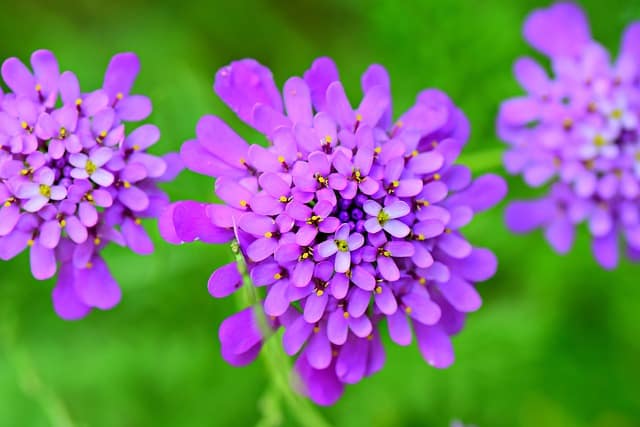
Contrary to its name, the Candytuft plant doesn’t relate to “candy” in any way. In fact, its flowers have an unpleasant scent, which can be discouraging for gardeners who are particular about sweet-smelling plants.
Nevertheless, Candytuft produces numerous pink and white flowers that blend with its dark green foliage in spring and early summer. This makes the plant an excellent choice for all types of gardens.
Care for this plant involves growing it in alkaline soil and placing it in a sunny area. Young plants can also benefit from regular watering until they mature.
6. Yarrow
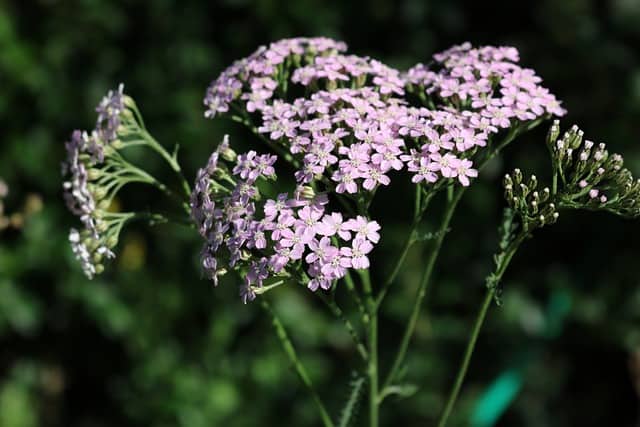
A flowering perennial with feather-like leaves, Yarrow offers a wide range of benefits. Native to Asia, Europe, and North America, this plant produces attractive, ovate white to pink flowers from spring to late summer.
Similar to Chrysanthemums, Yarrow has a powerful, sweet-smelling scent that can be uncomfortable for some people.
Not only is Yarrow highly nutritious and edible, but it is also used for medicinal purposes. It is believed to treat toothaches, throat infections, earaches, cuts, and abrasions. In certain regions, Yarrow is used to relieve fever, pain, and insomnia.
For plant enthusiasts, Yarrow makes a good companion plant, as it is highly attractive to beneficial insects and serves as a repellent to some pests. Yarrow is a drought-tolerant plant, which makes it useful for preventing soil erosion.
Some of this plant’s requirements are similar to those of Baby’s breath. It needs full sun, little watering, and well-draining soil types to thrive.
7. Sweet Alyssum
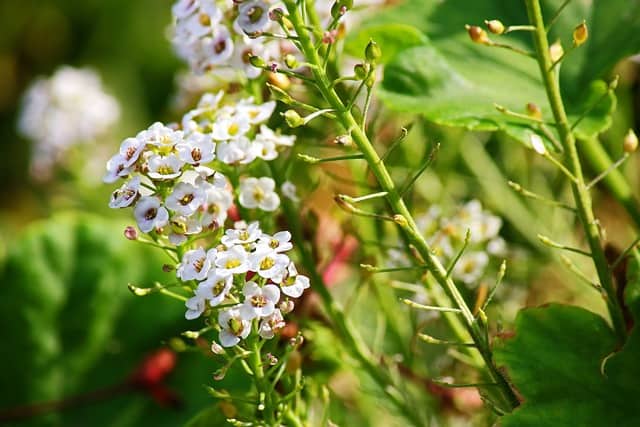
As its name suggests, Sweet Alyssum radiates “sweetness” from its fragrance to flowers and narrow, gray-green leaves. Despite being a low-growing plant, Sweet alyssum produces flowers all through its growing season.
Typically, the flowers are about 0.20 inches in diameter and come in white, pink, violet, or yellow.
One of the advantages of growing Sweet Alyssum is that it requires little care during its growing season. Resistant to drought, Sweet alyssum fades during the heat period and blooms in the fall.
In some places, including California, this plant is considered an invasive species. When grown in full sun, moist, well-draining soil, and with at least an inch of water every week, Sweet Alyssum flourishes.
8. Queen Anne’s Lace

Also commonly known as wild carrot, Queen Anne’s Lace is a flowering plant native to Europe. It can grow to a height of 5 feet high when mature and produces dense umbels of small, white flowers.
Queen Anne’s Lace also has finely divided, lacy, triangular-shaped leaves that are about 2 to 6 inches long.
Although the plant’s roots can be eaten when young, some people may suffer from skin irritation from its leaves.
In some places, Queen Anne’s Lace is considered an invasive weed. However, it is used for treating chronic ulcers in certain regions. It can also be used as a companion plant to other garden crops, being a beneficial weed.
Queen Anne’s Lace thrives in areas with bright sunlight and well-drained soil.
9. Flowering Spurge

Another plant that shares a striking resemblance with Baby’s breath is the flowering Spurge. It is a perennial plant that produces white flowers from early summer to late fall. Flowering Spurge is easy to care for when the conditions are favorable for its growth.
Typically, the plant grows up to 3 feet tall and has light green leaves that are about 1.5 inches wide and 3 inches long. It can thrive in almost all soil types, as long as it drains well and can tolerate drought.
Flowering spurge has a milky sap that can cause skin irritation in some people even though it is used for medicinal purposes.
10. Ornamental Onion
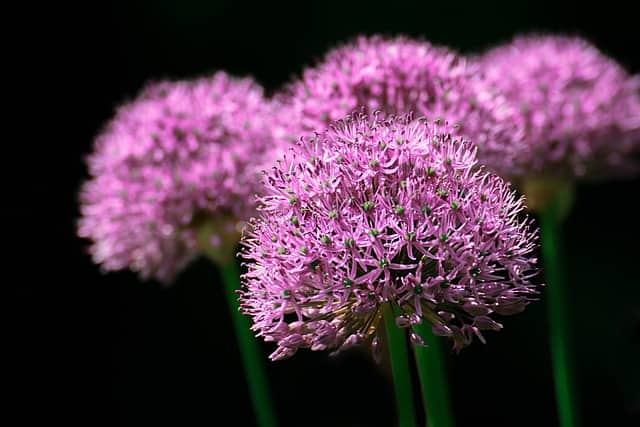
Alliums, commonly called ornamental onions, are special plants that make a good addition to flower gardens. Apart from being a fast-growing plant, ornamental onions produce beautiful round flower heads that comprise several star-shaped flowers.
While you can’t use this plant for cooking, the ornamental onion leaves smell like onions when squeezed. Moreover, its gorgeous flowers will brighten up your flower garden effortlessly.
To maintain the ornamental onions, place them in areas where they can receive full sunlight. They also prefer slightly acidic soil that drains well. In addition, this ornamental plant does not need frequent watering to stay healthy.
Types of Baby’s Breath
There are several species in the Gypsophila genus that can make great additions to your floral garden. Here are some of the most common ones in the plant’s varieties:
1. Gypsophila paniculata (Bristol Fairy)
Bristol fairy is a tall variety of the baby’s breath plant, reaching a height of about 4 feet. It produces white, delicate flowers 1.2cm wide in summer. This variety also has a bushy habit with scanty foliage.
2. Gypsophila elegans (Showy Baby’s Breath)
Showy baby’s breath is an annual variety that produces white flowers that are about 1.5cm in diameter. This variety’s height and spread range from 25 to 50 cm, even though it produces flowers for only a short period. But its white blooms are stunning and big compared to the other varieties.
3. Gypsophila paniculata (Viette’s Dwarf)
Viette’s dwarf is also one of the most popular and unique varieties of the baby’s breath plant. It produces pale pink flowers in summer and spring and can grow to 15 inches in height.
4. Gypsophila paniculata (Perfekta)
Perfecta has similar features to the Bristol Fairy in terms of size and growing habits. This variety produces larger flowers and blooms longer. It can grow to about 3 feet in height.
5. Gypsophila paniculata (Compacta plena)
The Compacta plena variety produces white flowers that are 6–7 mm wide. It has a climbing habit and grows bushy. This variety can grow up to 40 cm and produces flowers in the summer.
Final Thoughts
While there’s a long list of flowers that look like Babys breath, choose any of the ones listed in this article for a start.
But before you buy any of these plants, find out if it is not among the list of invasive species in your region. Also, make sure you research the plant’s requirements so that it can thrive in your environment.
Frequently Asked Questions
What Does Baby’s Breath Symbolize?
There’s a common belief that Baby’s breath symbolizes everlasting love. It’s no wonder why the flower is commonly used in wedding ceremonies. Baby’s breath also symbolizes innocence, which makes the plant a perfect gift for new mothers.
What are the Different Types of Baby Breath?
Some of the varieties of Baby’s breath include Festival Star, Perfekta, Bristol Fairy, Pink Fairy, and Viette’s Dwarf.
Baby’s breath is among the plants in Gypsophila, a plant genus in the carnation family. Most plants in this genus produce long, straight stems with fuzzy blooms.
Is Baby’s Breath Toxic to Dogs?
Yes, Baby’s breath is mildly toxic to dogs if ingested. These plants contain gyposenin, a toxin that causes gastrointestinal disturbances. Gypsophila roots also contain saponins, one of the components in certain medicines and detergents.
Symptoms of Baby’s breath toxicity in dogs include vomiting and diarrhea. If you notice severe reactions in your pet, don’t hesitate to contact your veterinarian.

Hey, I’m Lisa and I’ve been an avid gardener for over 30 years. I love writing, talking and living in the garden! Feel free to connect with me on my socials below

